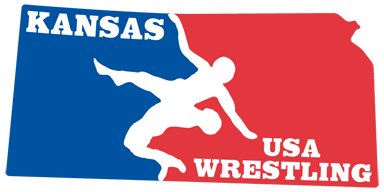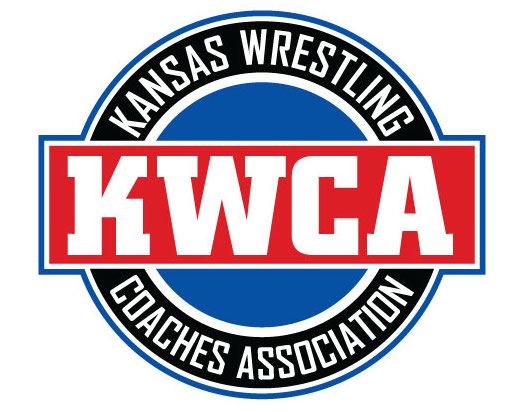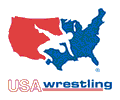I was trying to find out budgeting information and came acrossed this article.
KSHSAA holds up in audit
Web Link to article:
http://cjonline.com/sports/2009-07-11/kshsaa_holds_up_in_auditAudit findings often don’t support concerns prompting study
BY RICK DEAN
Created July 11, 2009 at 7:06pm
Updated July 12, 2009 at 12:47am
Let’s put this into a perspective most taxpayers might understand.
Imagine you are facing an IRS audit. You are an honest person, yet you haven’t done everything perfectly. You await the government auditor with the anticipation common to root canals.
Anxious months later, you get his report. He disallows a single deduction; you owe a tax bill of $50. You aren’t overjoyed. Yet somehow you feel like celebrating.
That is a sense of what the Kansas State High School Activities Association, the governing body of the state’s athletic and scholastic activities programs, felt after its first appearance before the Legislative Division of Post Audit — the performance watchdog of Kansas government.
Fourteen months after a legislative committee authorized an audit in April 2008, the KSHSAA learned in the summary of the auditors’ June 25 report that “although the majority of (Association) members appear to be satisfied with most aspects of rules and regulations, a significant number are unhappy with some aspects.”
The resulting sound of silence was broken only by a quiet sigh of relief from the KSHSAA headquarters in west Topeka. Was that it? Is that the worst you found?
Gary Musselman, a KSHSAA executive for 22 years and its executive director for the past 13, was hardly floored to learn that well-intentioned people are uphappy with some aspects of Association policy.
When, after all, was anyone ever completely happy with every policy implemented by a statewide body representing 779 junior and senior high schools from Leavenworth to Liberal, St. Francis to St. Paul, and which governs activities as diverse as football and forensics, baseball and band?
“When your responsibility is to govern, there will always be concerns about, ‘Are you being fair? How do you make rules?’ ” Musselman said. “And in a state as diverse as Kansas, it’s hard to get everyone feeling the same about anything.”
Moreover, the data state auditors interpreted as “significant” dissatisfaction with Association policy read like poetry to an administrator more accustomed to having angry coaches and parents question his motivation, his judgment. Occasionally, even his parentage.
State auditors, for example, found it significant that one out of five coaches surveyed said the Association was “unresponsive” to the concerns of Kansas high school athletes.
Musselman found it more significant that 67 percent of coaches — long the most outspoken of KSHSAA critics — called the Association “responsive” to those concerns.
“I find the report interesting in that when it says 60 percent are in support and 40 percent have concerns, the 40 percent are what we talk about,” he said.
“I guess I should have spoken to that because I’ve had school superintendents say they read the audit and that (the Association) did a super job, but they were concerned about the somewhat negative stance.”
The 40 percent figure that generated headlines was the percentage of surveyed coaches who, according to the auditors, believed Kansas high school athletes “didn’t have enough opportunities to develop their athletic skills.” It is an age-old lament from coaches who see Association rules limiting games and practice opportunities as hindering the development of their players.
But their concern was blunted some by the auditors survey that ranked Kansas No. 2 among the seven Big 12 states in per capita production of Big 12 athletes in football and men’s and women’s basketball, the three showcase sports surveyed.
Texas, needless to say, produces more Big 12 football and basketball players than the six other states combined. But when population is factored in, Kansas produces five athletes per 100,000 residents, trailing only Nebraska.
“It’s a case where reality is not always in sync with perception,” Musselman said.
“There’s a perception elsewhere that we’re a bunch of small, backwater schools. Well, Jordy Nelson (a Kansas State All-American from tiny Riley County now in the NFL) did all right. So did Jackie Stiles (who made it to the WNBA from Claflin). You can go up and down a list (of small-school Kansas success stories).”
Numbers don’t lie
The effect of Association rules on the development of Kansas athletes was one of three major concerns legislators — responding to personal or constituent complaints — told the auditors to consider.
Others involved what legislators called a “cumbersome” governing structure that made the Association unresponsive to the wants of member schools; and revenue-sharing policies that, in the words of the pre-audit scope statement, “cause schools to lose money when they host (Association-sanctioned) postseason events.”
Again, figures compiled by the auditors in a survey of some 3,100 coaches, administrators, superintendents and school board presidents failed to support those contentions.
The auditors’ survey found only one in four respondents from the Association’s governing boards thought the board was too large. Only one in three thought it didn’t adequately represent schools of all sizes. Some survey respondents also said small schools (classes 1 through 3A) were under-represented.
In breaking down the Association’s 78-member Board of Directors, auditors found one Board member for every eight small schools, compared to one for every four large schools (classes 4 through 6A). Yet in analyzing student representation, small schools had one board member for every 759 students compared to one for every 2,619 students in classes 4 through 6A.
Kansas’ big-vs.-small rift, as prominent in the Statehouse as it is in the KSHSAA, shifted in 1992 when the Association sought legislative permission to expand its then 60-member Board of Directors, which included one representative from each league regardless of school size.
Today, leagues with combined enrollments of more than 4,000 students have a second representative — who must be a woman or from a minority population — on the 78-member board. Leagues with combined enrollments of 8,000 can get a third representative.
The change has tipped the big-small balance, Musselman said, but it came about through a democratic process.
“Prior to 1992, the over-simplified, seat-of-the-pants criticism was that the small schools ran the organization,” he said. “Now those small schools might say a shift in power has finally happened, that we can’t control our destiny because we’ll be outvoted by this larger block.
“But in 21 years here I haven’t seen that many issues break down to large school vs. small school. The issue about summer coaching may have come as close to that as anything.”
Fiscal restraint
The legislative concern about schools losing money when hosting KSHSAA-sponsored postseason events also didn’t stand up to auditing scrutiny.
Auditors did note the KSHSAA tends to keep a higher percentage of postseason gate receipts — 70 percent, a revenue stream that provides almost 90 percent of the Asssociation’s nearly $4 million operating budget — than do the other six Big 12 states surveyed. Two of three administrators surveyed thought they should retain a higher percentage for postseason events they host.
But auditors also noted the Association — which pays for officials, trophies and liability insurance at all postseason events — makes up the difference when a host school’s expenses are greater than its 30 percent take.
The auditors also reported the Association spends a larger share of operating revenue on its staff than does any other comparison state. Moreover, the KSHSAA maintains a $5.5 million cash reserve, more than any other state surveyed.
Nearly 40 percent of the Association’s budget goes to staff compensation.
Musselman said staff salaries, determined by the Association’s Executive Board, reflect a low turnover rate and resulting high service time among his top administrators.
“Stability is an indication of people finding meaning in their work, and you tend to reward that,” he said. “They know what they’re doing, and you want to retain those folks.”
Solid fiscal management, Musselman added, helped the KSHSAA build its large cash reserves. The Association exercised the option to pay off the 15-year bonds on its new $3.2 million headquarters in only five years, thus saving some $900,000 in budgeted interest payments.
The Association now plans to return some of that cushion to its member schools in tight budgetary times.
In the 2009-10 school year, membership dues — $400 annually for high schools and $125 for junior highs — will be cut in half. The KSHSAA also will pay 16 percent of the annual catastrophic insurance premium paid for every Kansas student who participates in a sport.
The Association in the past two years also made $10,000 contributions to help restore the activity programs at tornado-ravished Greensburg and Chapman.
“In these financial times, we’ll look at what can we do to help our member schools,” Musselman said. “If we can find creative ways to help schools cover costs, we’re going to look into it.”
The legislative auditors offered no recommendations for KSHSAA improvements, other than to use the data it compiled as a guideline for future considerations of rule or policy revisions.
It was the kind of inconclusive conclusion Musselman had been hoping to hear.
“Nothing in (the report) makes me ashamed,” he said. “We work hard to do right by our schools, because if we don’t, they’ll let us know. After all, we work for them.”







